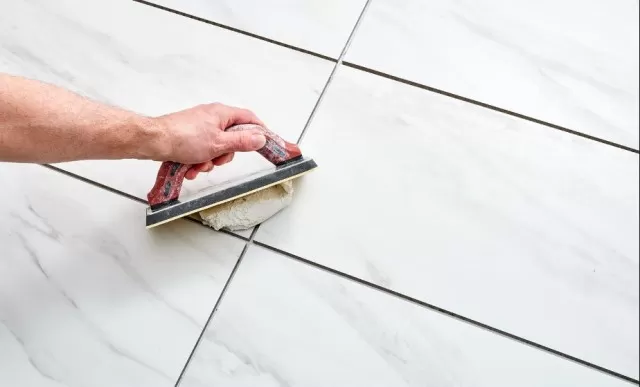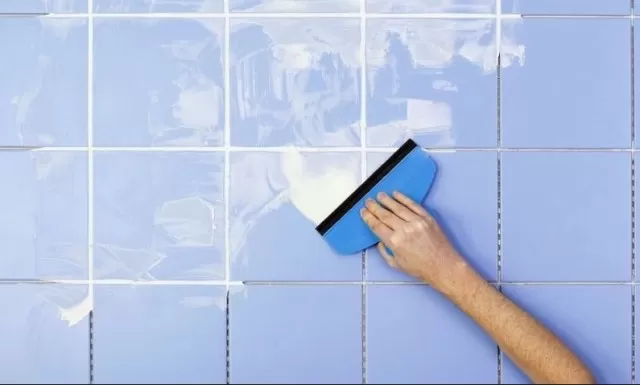Cleaning tile floors is an important part of maintaining a clean kitchen or bathroom. Different types of tiles require specific cleaning techniques.
Cleaning Tile Floor

Cleaning tile floors is an important part of maintaining a clean kitchen or bathroom.
Different types of tiles require specific cleaning techniques and products. Here’s a guide on how to clean tile floors based on the material:
Ceramic and Porcelain Tile Floors:
Start by sweeping or vacuuming the floor to remove loose dirt and debris.
Fill a bucket with warm water and add a mild detergent or tile cleaner according to the manufacturer’s instructions. Dip a mop into the cleaning solution and wring it out thoroughly.
Mop the floor, working in small sections, and rinse the mop frequently in the cleaning solution. For tough stains or grout lines, use a soft-bristle brush or an old toothbrush dipped in the cleaning solution to scrub gently.
Rinse the floor with Clean Water to remove any residue. Dry the floor with a clean towel or allow it to air dry.
Natural Stone Tile Floors (e.g., marble, granite, travertine):
Sweep or vacuum the floor to remove loose dirt and debris.
Mix a neutral pH stone cleaner with warm water according to the manufacturer’s instructions. Use a mop or soft cloth dampened with the cleaning solution to clean the floor.
Avoid excessive water or soaking the stone. For stubborn stains, use a stone-safe cleaner or poultice according to the manufacturer’s instructions.
Rinse the floor with clean water to remove any cleaner residue. Dry the floor with a clean towel or allow it to air dry.
Vinyl Tile Floors:
Start by sweeping or vacuuming the floor to remove loose dirt and debris.
Mix a solution of warm water and a mild detergent or vinyl floor cleaner. Dip a mop or sponge into the cleaning solution, wring it out well, and mop the floor.
For stubborn stains, apply the cleaning solution directly to the stain and let it sit for a few minutes before scrubbing gently. Rinse the floor with clean water to remove any residue.
Dry the floor with a clean towel or allow it to air dry. Remember to check the manufacturer’s recommendations for cleaning and maintenance specific to your tile type.
It’s also essential to test any cleaning products or methods in a small, inconspicuous area before applying them to the entire floor.
How Long You Should Clean Tile Floors

To maintain clean and residue-free tile floors, it’s recommended to follow a regular dry and wet cleaning schedule.
Here’s a general guideline:
Dry Cleaning:
Vacuum or sweep your tile floors at least once a week or as needed to remove visible debris and dirt.
Use a soft-bristle vacuum attachment or a broom to avoid scratching the surface of the tiles. Pay attention to corners and tight spaces where dirt can accumulate.
Wet Cleaning:
Plan to mop your kitchen tile floor at least once every two weeks.
This frequency can vary depending on the amount of foot traffic and level of dirt. For bathroom tile floors, it’s advisable to mop once a week due to the higher accumulation of germs and moisture.
When mopping, use a suitable cleaner recommended for your specific tile type. Follow the instructions provided by the manufacturer of the cleaner.
Pay special attention to grout lines, as they can collect dirt and become discolored over time. Spot-clean the grout as needed or every few months to keep it looking fresh and clean.
You can use a grout cleaner or a mixture of baking soda and water applied with a small brush or toothbrush. By incorporating regular dry cleaning and scheduled wet cleaning, you can maintain the cleanliness and appearance of your tile floors.
Adjust the frequency of cleaning based on the level of dirt, foot traffic, and personal preference.
Clean Tile Grout

Cleaning tile grout can be a bit challenging, but with the right approach, you can achieve great results.
Here’s a step-by-step guide:
Make a DIY grout cleaner:
Create a paste by mixing baking soda and water.
This mixture serves as a natural and effective grout cleaner. Alternatively, you can use a commercial grout cleaner if preferred.
Scrub the grout:
Apply the baking soda paste onto the grout lines and let it sit for some time, preferably overnight.
This allows the paste to penetrate and loosen stains. In the morning, scrub the grout using a stiff nylon brush.
Avoid using a metal brush, as it can damage the grout.
Rinse the grout:
After scrubbing, rinse the grout lines with water to remove any remaining residue from the cleaning process.
You can use a damp cloth or a mop to wipe away the excess paste and dirt.
Seal the grout:
To protect the grout from future stains and discoloration, consider applying a silicone-based grout sealer.
This should be done approximately 10-14 days after the grout is installed or renewed. Follow the manufacturer’s instructions for the sealer application process.
Note:
There is some debate regarding the use of steam cleaners for deep cleaning tile grout.
While steam mops can be effective, there is a risk of damage, especially if the grout is older or already damaged. Steam can accelerate the deterioration of damaged grout and may cause pitting and discoloration over time.
If you choose to use a steam cleaner, ensure your grout is in good condition and sealed properly. Exercise caution and avoid frequent use to reduce the risk of damage.
By following these steps and maintaining regular cleaning, you can keep your tile grout looking fresh and clean.
*The information is for reference only.